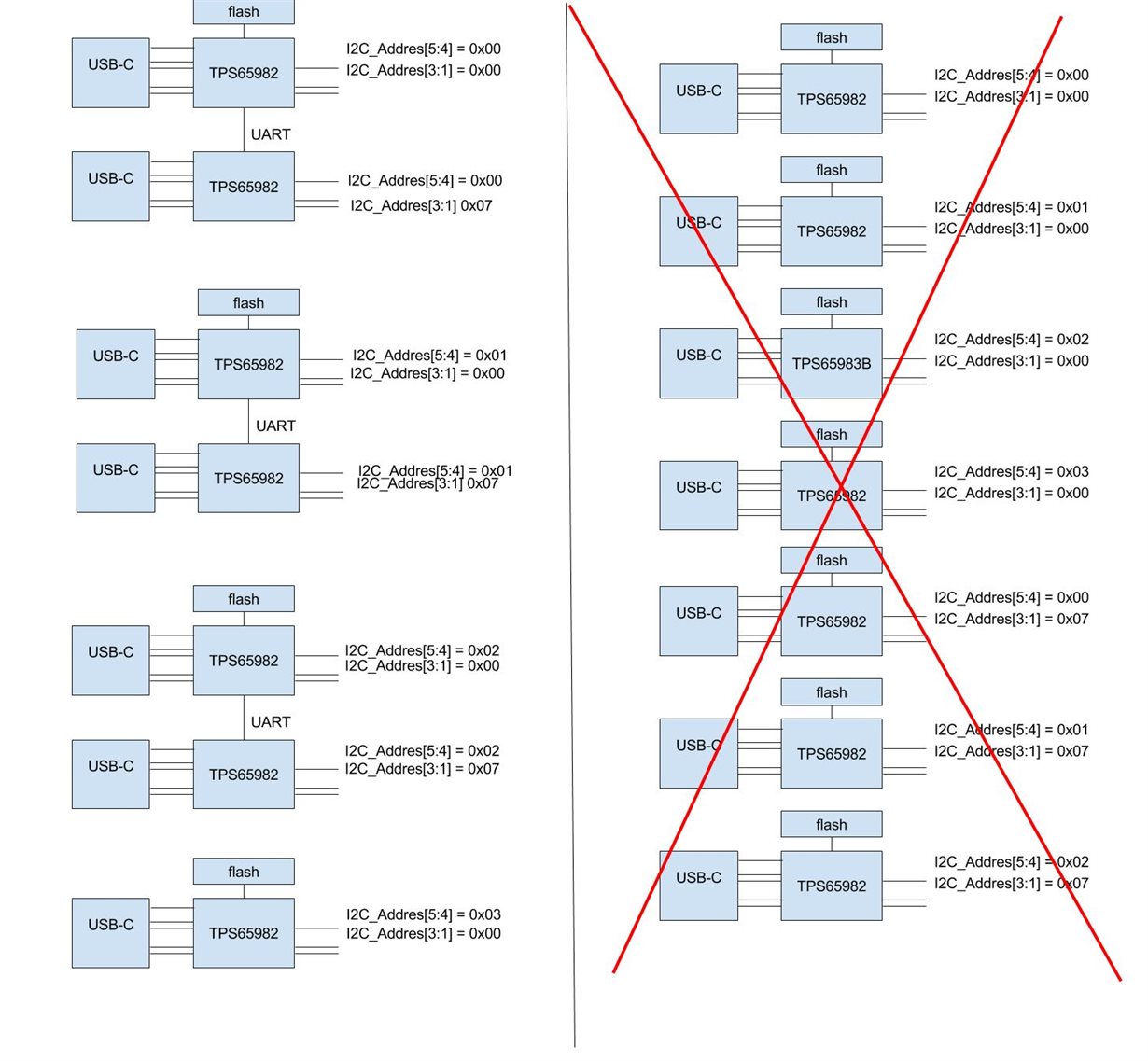Other Parts Discussed in Thread: TPS65982, TPS65983B
I have some hardware en software questions.
I am trying to daisy chain multiple TPS65982 but the documentation is not really clear about it. Also I am trying to figuring out the Application Customization Tool. But the documentation is not consistent with version 2.15.
Here are my questions:
Hardware
1. I want to daisy chain the TPS65982, but the datasheet is not clear about it: How many can you daisy chain?
2. And how? I am guessing TX of the 'master' on the RX on the slave and so on. But when i'm reading the datasheet i get confused.
UART_TX is @ POR a UART_RX and you have to Connect UART_TX to the TX of the next device. But i also have to connect the UART_RX to the TX.
| E2 | UART_TX | Digital output | Port multiplexer pins | UART_RX | UART serial transmit data. Connect pin to another TPS65982 UART_TX to share firmware. Connect UART_RX to UART_TX when not connected to another TPS65982 |
| F2 | UART_RX | Digital input | Port multiplexer pins | Digital input | UART serial receive data. Connect pin to another TPS65982 UART_TX to share firmware. Connect UART_RX to UART_TX when not connected to another TPS65982 and ground pin through a 100-kΩ resistance. |
3. In daisy chain, should ever device boot at the same time to load the firmware? Or is is possible for example chip 2 to load the firmware 5 min later? To do this, should de TX of the last device connected to the RX of the master device?
Application Customization Tool:
4. Device Initialization Chain:
In the manual (slvuar8a) I find this: 'Allows user to save unique configurations for up to three devices in a single image to flash simultaneously (through UART)' But I can only select 2 instead of 3. Is this also how many device I can daisy chain? Or are that in total 8. Because the datasheet talks about 7 slave adresses. (datasheet: Page 79)
SPI Owner, UART Master 0 (Primary) 0 Ω 0x00
UART Slave 7 38.3 kΩ 0x01
UART Slave 6 84.5 kΩ 0x02
UART Slave 5 140 kΩ 0x03
UART Slave 4 205 kΩ 0x04
UART Slave 3 280 kΩ 0x05
UART Slave 2 374 kΩ 0x06
UART Slave 1 (Secondary) Open 0x07
5. Configuration Data Sets:
I can select 6 configuration sets, This are sets I can choose by a GPIO to load when the system boots? Is this the same as the configurations seen in slvuaf8c (page 13) ? But that are 16 different configurations... How is this been done? Or is this something else
6. Configuration Data Sets:
What are the function of the Virtual pin strap settings?
7. Where can I find the project file for the EVM module instead of the binary?
Kind regards,
Pieter


